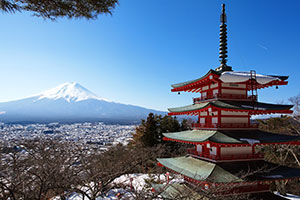13-Nights Something About Korea

13-Nights Something About Korea
South Korea
Travel Answers (Formerly Travel2)
Vacation Offer ID 1633246
Reference this number when contacting our travel specialist.
Travel Answers (Formerly Travel2)
Something About Korea is a captivating, private vacation that offers an immersive exploration of history, culture, and modern allure—from ancient palaces and serene temples to bustling urban centers and contemporary art scenes. Every curated stop, from traditional folk villages and historic landmarks to futuristic skylines, promises a transformative journey that is both enlightening and unforgettable.Vacation Inclusions
- 5-nights Seoul, Four Points Hotel Myeongdong or similar
- 1-night Daejeon, Ramada Daejeon hotel or similar
- 1-night Andong, Standford Andong hotel or similar
- 1-night Gyeongju, Gyeongju Commodore Hotel or similar
- 2-nights Busan, Asti Busan Hotel or similar
- 3-nights Jeju, Ocean Suites Hotel or similar
- All transportation
- All entrance fees
- English-speaking Driver/Guide
- 13 breakfasts and 11 lunches
- Domestic flights Busan to Jeju and Jeju to Seoul
Featured Destinations
| Jeju Island | Destination Guide |
| Andong | Destination Guide |
| Daejeon | Destination Guide |
| Gyeongju | Destination Guide |
| Pusan (Busan) | Destination Guide |
| Seoul | Destination Guide |
Valid Date Ranges
Prices listed may vary by departure dates. Full terms and conditions apply. Rates vary by date of travel and services; please inquire for the best prices for your preferred travel dates. Prices are quoted in USD and are ‘from’, per person, based on twin share. Single supplements apply and are advised on request. Prices are current at time of posting (2/24/2025), may differ when you book your travel and are not guaranteed until full payment is received and processed. Travel Answers terms and conditions apply to change fees and cancellations. All prices, itineraries and routing are subject to change without notice. Please call for our current prices based on availability. CA CST: 2076233-40 | WA ID: 601 684 531.
All fares are quoted in US Dollars.

 800.458.7477
800.458.7477

